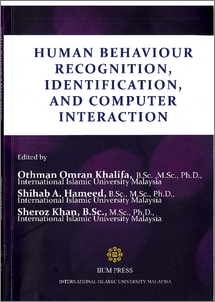Htike, Kyaw Kyaw and Khalifa, Othman Omran and Lai, Weng Kin
(2011)
Human posture recognition implementation and deployment.
In:
Human Behaviour Recognition, Identification and Computer Interaction.
IIUM Press, Kuala Lumpur, pp. 58-67.
ISBN 978-967-418-156-7
![[img]](http://irep.iium.edu.my/style/images/fileicons/application_pdf.png)  Preview |
|
PDF (Human posture recognition implementation and deployment)
- Published Version
Download (453kB)
| Preview
|
Abstract
The recognition of human postures is usually the initial step in human behavioral analysis. It is a challenging problem due to the huge quantity of possible cases. The number of postures depends on the degree of freedom of the human body. Moreover, the physical attributes and clothes of a person influence the perception of a particular posture. There are two general techniques for human posture recognition: intrusive and non-intrusive techniques. Intrusive techniques make use of sensors and markers placed on the human body for data acquisition. In contrast, non-intrusive techniques use remote sensing devices such as video cameras for data acquisition. For the purpose of video understanding, non-intrusive techniques are superior to intrusive ones because the observed person is not always cooperative
Actions (login required)
 |
View Item |


 Download Statistics
Download Statistics Download Statistics
Download Statistics